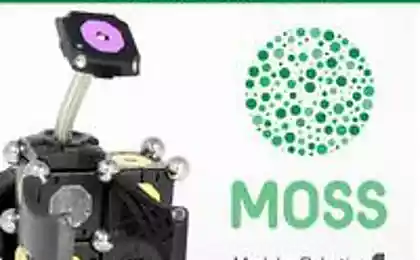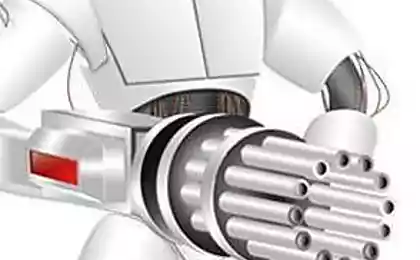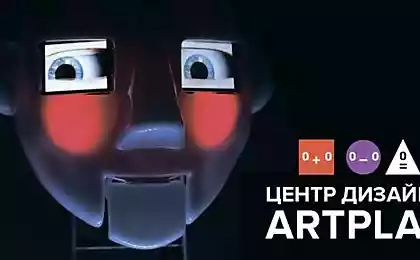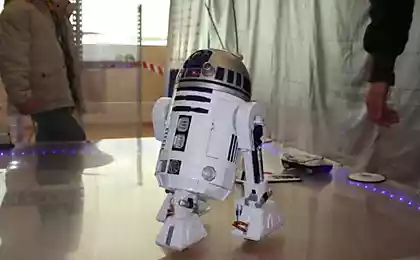573
Robot Catarina - permanent assistant in the garden
Robotics is very attractive for agriculture, especially when it comes to weeding the beds or finding pests. But the "Katarina" robot functionality is not limited to these features.
How did the self-propelled robot?
robot creation The idea came from the general concept for the automation of processes in the agricultural sector. Its creators believe that in order to achieve a positive effect need to actively implement robotic devices and installation and fundamentally change the approach to agriculture.
According to the professors of the University of Sydney (Australia), with the time of labor productivity of robots will grow so much that most of the work in which manual labor is now used, the machine will perform. The prototype of such plants became agricultural robot created by them.
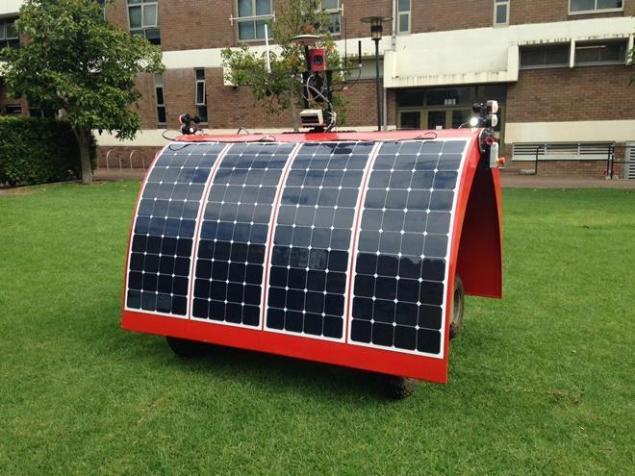
Initial sea trials were held on the lawn in front of
Institute Robot gardener equipped with a semi-circular dome, which are fixed, flexible solar panel. Thanks to them, the light is collected and stored, transformed into energy for the battery life. All internals are hidden under a durable casing, so the robot is not afraid of rain and bad weather conditions. On the frame are suspended cameras, lasers, sensors, watering arrangements, containers with fertilizers, and in the long term and more complex devices.

The device simple robot, but before these intelligent systems are not prepared
What can "Katarina»?
The multifaceted Catarina robot equipped with sensors and several cameras, which allow it to gather information, process the data and transmit them to the owner by e-mail.
Controlling the robot
"Ladybug" is still sometimes referred to as "Katarina", in fact is an analytical center and mobile observation post. The robot is responsible for monitoring, detection of weeds, pests, identification of different varieties and crops that grow in the area.
Experimental plots, on which she worked Catarina, were selected according to the degree of difficulty
For weeding, hilling and loosening the robot has a movable "arm" -manipulyator and sensors to detect weeds. In the future, the robot learns to determine the ripeness of fruits, he will be able to sample and probe the soil. Also, we are talking about the automation of the assembly process the crop.
Practical application of the "Katharina»
Unique robot was field tested on Australian grounds in New South Wales, planted onions, spinach and beets. A pilot plant has been equipped with 4 wheels, cameras and lasers, which enabled her to move between the beds, and the operator - to control the robot's movement
.
The sides of the body can simultaneously serve as protection from the rain
The results exceeded all expectations - a robot quite accurately determine the state of the plant, potential threats and respond accurately to operator commands. Charge solar enough for three days. Thus, the objective obstacles to start the device in mass production are missing.
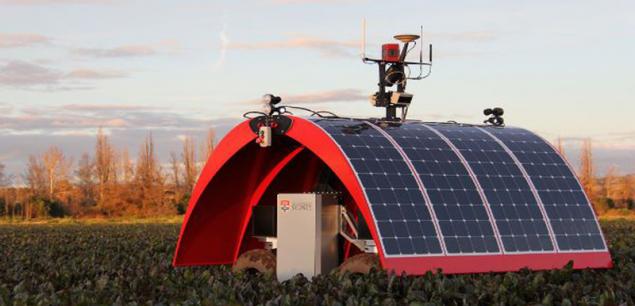
When working in the field Catarina showed good results
Perhaps very soon, our fields are dotted with self-propelled robots that will tirelessly handle landing, monitor and record everything happening around. This opens up entirely new perspectives in agriculture.
How did the self-propelled robot?
robot creation The idea came from the general concept for the automation of processes in the agricultural sector. Its creators believe that in order to achieve a positive effect need to actively implement robotic devices and installation and fundamentally change the approach to agriculture.
According to the professors of the University of Sydney (Australia), with the time of labor productivity of robots will grow so much that most of the work in which manual labor is now used, the machine will perform. The prototype of such plants became agricultural robot created by them.

Initial sea trials were held on the lawn in front of
Institute Robot gardener equipped with a semi-circular dome, which are fixed, flexible solar panel. Thanks to them, the light is collected and stored, transformed into energy for the battery life. All internals are hidden under a durable casing, so the robot is not afraid of rain and bad weather conditions. On the frame are suspended cameras, lasers, sensors, watering arrangements, containers with fertilizers, and in the long term and more complex devices.

The device simple robot, but before these intelligent systems are not prepared
What can "Katarina»?
The multifaceted Catarina robot equipped with sensors and several cameras, which allow it to gather information, process the data and transmit them to the owner by e-mail.
Controlling the robot
"Ladybug" is still sometimes referred to as "Katarina", in fact is an analytical center and mobile observation post. The robot is responsible for monitoring, detection of weeds, pests, identification of different varieties and crops that grow in the area.
Experimental plots, on which she worked Catarina, were selected according to the degree of difficulty
For weeding, hilling and loosening the robot has a movable "arm" -manipulyator and sensors to detect weeds. In the future, the robot learns to determine the ripeness of fruits, he will be able to sample and probe the soil. Also, we are talking about the automation of the assembly process the crop.
Practical application of the "Katharina»
Unique robot was field tested on Australian grounds in New South Wales, planted onions, spinach and beets. A pilot plant has been equipped with 4 wheels, cameras and lasers, which enabled her to move between the beds, and the operator - to control the robot's movement
.

The sides of the body can simultaneously serve as protection from the rain
The results exceeded all expectations - a robot quite accurately determine the state of the plant, potential threats and respond accurately to operator commands. Charge solar enough for three days. Thus, the objective obstacles to start the device in mass production are missing.

When working in the field Catarina showed good results
Perhaps very soon, our fields are dotted with self-propelled robots that will tirelessly handle landing, monitor and record everything happening around. This opens up entirely new perspectives in agriculture.
Photos from the "Woodstock" festival in 1969 allow us to see the origins of modern fashion
Psychosomatics hair loss in women



